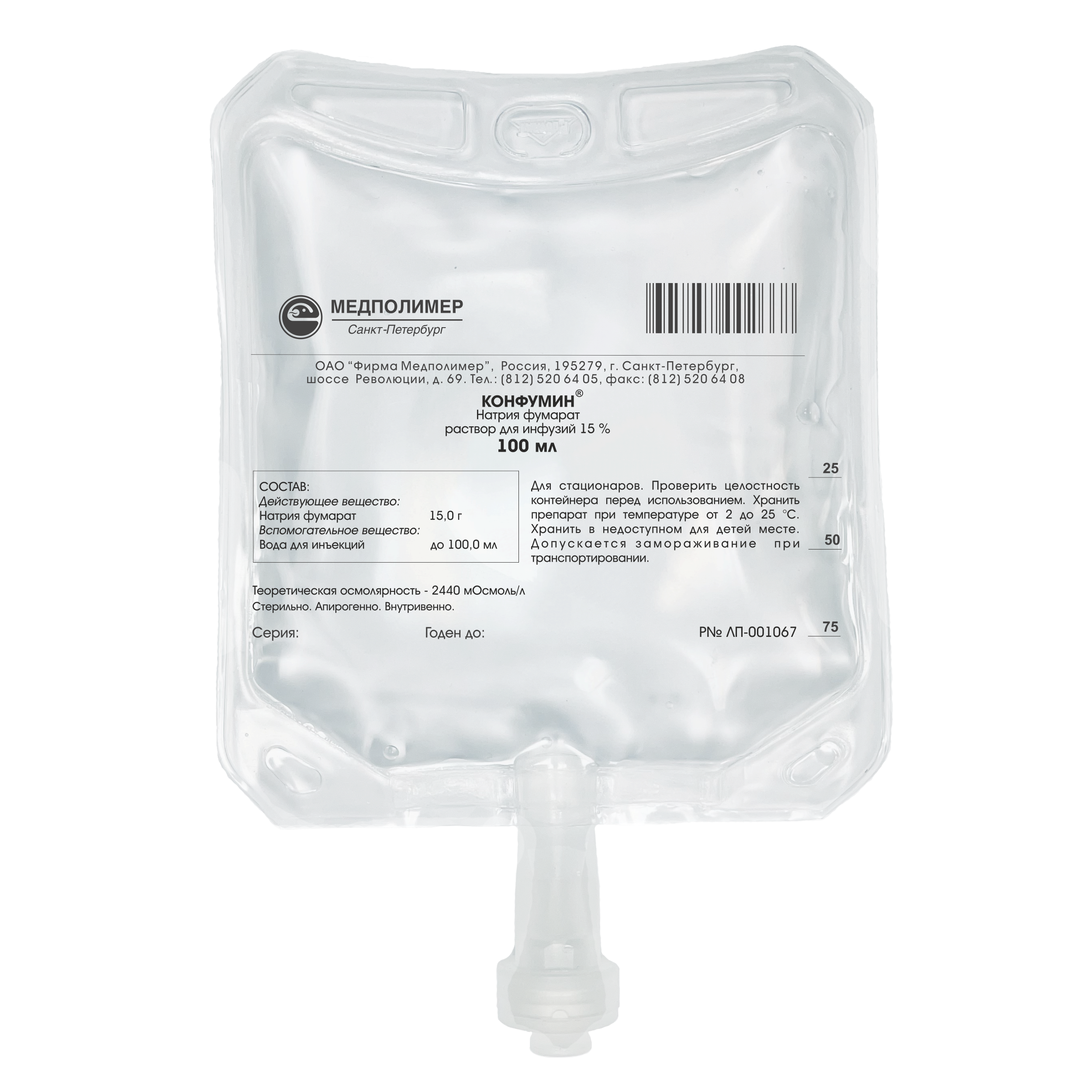

About Us
Manufacture
Products
Procurement
Working at Medpolymer
- Contact Us
- Ru

Marketing authorisation No.: LP-001067
Composition:
Sodium fumarate — 150 g
Water for injections– up to 1.0 L.
Theoretical osmolarity – 2440 mOsmoI/L.
Therapeutic class: a drug increasing metabolism and energy supply of tissues, reducing tissue hypoxia.
Pharmacological properties.
Pharmacodynamics. Active pharmaceutical ingredient of Konfumin is sodium fumarate. Sodium fumarate is an antihypoxant activating adaptation of the cells to oxygen deficiency. Its action is associated with participation in reversible oxidation-reduction reactions in the Krebs cycle. ATP synthesis, which is necessary to maintain body cell functions in hypoxia, occurs during these reactions. In case of oxygen deficiency, the pool of oxidation substrates, including fumarate ions, is exhausted, and its exogenous replenishing (injection as a part of Confumin) increases the reserve capacity of cellular respiration systems, allowing ATP synthesis by the cells under hypoxic conditions. These reactions provide the mechanism of antihypoxic action of Konfumin.
Maintaining the processes of oxidative metabolism in the tissues in case of oxygen deficiency prevents the formation and accumulation of unoxidized metabolic products, thereby reducing acidemia. Along with metabolic alkalization, Konfumin also contributes to weakening or eliminating of acidemia by chemical neutralization of acidic metabolic products. Sodium fumarate is a salt formed by a strong base and a weak acid. Once Konfumin is injected into the bloodstream, sodium fumarate undergoes hydrolysis to form fumaric acid and a strong base (NaOH). The latter is used for neutralization of acidic metabolic products, and fumaric acid is used for ATP synthesis.
Beneficial effect of Konfumin with respect to oxidative metabolism in tissues allows to improve the functional state of vital organs, including heart, under hypoxic conditions. The drug supports myocardial contractility and has a cardiotonic effect.
Pharmacokinetics. During Konfumin infusion exogenous fumarate injected into the body is completely equivalent to the endogenous fumarate by a chemical structure. Moreover, fumarate is known for conversion into succinate, malate, oxaloacetate (Krebs cycle), as well as aspartate (urea cycle) and other metabolites.
Indications. Hypoxic states of various origin with hypovolemia (blood loss, shock, injuries, burns, intoxications, etc.).
Confumin has clinically proved efficiency in the treatment of alcohol and drug intoxication.
Shelf life: 2 years.